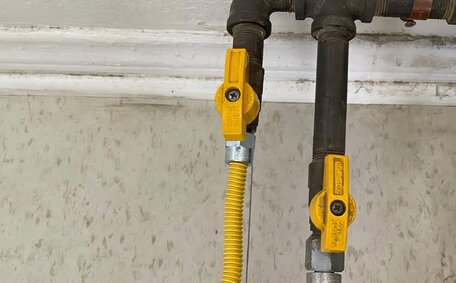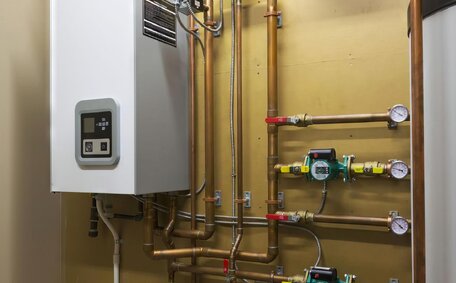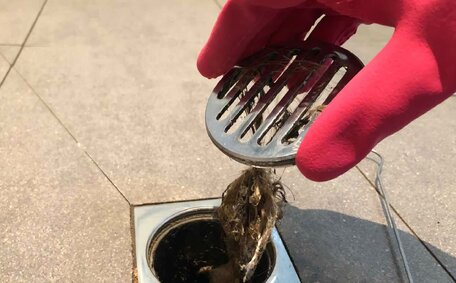Introduction to Drain Cleaning Methods
When drains get clogged, two of the most common methods plumbers use to clear them are drain snakes and hydrojetting. Both can be highly effective at removing different types of blockages, but they work in different ways.
Drain snakes, also called plumbing snakes or augers, are long, flexible metal cables that are inserted into pipes to physically break up and pull out material causing clogs. Hydrojetting uses highly pressurised water blasted through pipes to scour their interiors and wash away buildup.
Each method has its advantages.
Drain snakes can dislodge simple clogs quickly without requiring special equipment. But hydrojetting is more powerful and thorough, capable of clearing even severe obstructions. However, it can potentially damage older or fragile pipework.
In general, hydrojetting is considered superior for completely cleaning pipes and preventing future clogs. The right technique depends on factors like pipe condition and the nature of the blockage. In general, hydrojetting is considered superior for completely cleaning pipes and preventing future clogs.
But for basic jobs, drain snakes may suffice.
When to Use a Drain Snake
Drain snakes tend to work best for clearing simple clogs close to openings like sink drains or toilets. They can quickly dislodge buildups of hair, grease, soap scum, or small objects that get caught in pipes. Drain snakes are also useful when a clog is accessible and the blockage is soft or loose.
Snakes are ideal for regular maintenance to keep drains free of minor obstructions before they become major blockages. Their flexibility allows them to navigate P-traps and bends in pipes. Metal snake cables won’t damage plastic or clay pipes, making them safe for most drain systems.
However, drain snakes have difficulty penetrating thick or dense clogs further down the pipes, like clumps of tree roots or years of hardened gunk. Trying to forcefully shove a snake through these obstructions risks scratching pipe walls or getting the cable knotted or stuck.
In general, plumbers may start with a drain snake for basic clogs, then upgrade to hydrojetting if snaking attempts fail. Hydrojetting provides superior cleaning for tougher clogs, but drain snakes remain an economical first option.
How Drain Snakes Work
Drain snakes work by using manual force to physically break up and dislodge clogs. They consist of long, flexible metal cables that are inserted into drain openings. By cranking a handle, the cables can be rotated and pushed deeper into pipes.
The metal coils have a spiral ridge wrapping around them. As the snake rotates and advances, this ridge bores into and grabs onto obstructions, allowing blockages to be broken apart or pulled out. The coils can bend around P-traps and negotiate pipes at multiple angles.
Drain snakes are available in different diameters. Plumbers select an appropriately-sized snake for each drain.
Larger snakes provide greater strength but may not fit smaller pipes. Smaller snakes can access tight spaces but have less power.
Cranking and working a drain snake takes physical effort and skill. With experience, plumbers learn to feel when a clog has been engaged and judge how much force is needed without damaging pipes. Controlled snaking can clear simple obstructions in sinks, tubs or toilets.
However, drain snakes are limited by their manual operation. They may not generate enough torque or reach to clear clogs deep in drain systems. But for basic, accessible clogs, drain snakes remain a fast, affordable solution.
Drain Snake Pros and Cons
Using drain snakes has several advantages:
- They are inexpensive and readily available.
- Snakes can clear simple clogs quickly without special equipment.
- They are easy for plumbers to transport to homes and manoeuvre into pipes.
- Snakes are generally safe for most drain types and won’t damage plastic or clay pipes.
However, drain snakes also have some disadvantages:
They often cannot clear severe or deep blockages on their own.Snakes can get tangled or stuck in extremely clogged pipes.It takes skill and experience to operate a drain snake properly.Drain snakes do not clean pipe walls as thoroughly as high-pressure jetting.Repeated snaking can eventually scratch or weaken pipe interiors.In the end, drain snakes are best for basic maintenance or Surface clogs, while hydrojetting is needed for deep cleanouts. Knowing when to use each method is key for plumbers.
When to Use Hydrojetting
Plumbers generally recommend hydrojetting for clearing fully blocked or severely clogged drains. It is the go-to method when drain snakes cannot adequately get the job done.
Hydrojetting excels at scouring out thick, dense or sticky accumulations coating the insides of pipes. Tree roots, grease deposits, rust buildup and other stubborn substances are no match for a concentrated high-pressure water blast.
Hydrojetting can also clean out much longer pipe lengths than snakes can reach, making it ideal for sewer lines, main drains and underground plumbing. The pressurised water can scour pipe walls fully while propelling itself around bends.
In addition, hydrojetting is the most thorough cleaning method to prevent future clogs from reforming. By washing away corrosion and biofilms that accumulate in pipes over time, hydrojetting helps reset drains to a like-new condition.
However, plumbers may still start with a drain snake on easily accessible clogs before resorting to hydrojetting. While hydrojetting is unquestionably more powerful, it requires large equipment and experienced operation. Hydrojetting also poses a higher risk of pipe damage if used carelessly.
Assessing the drain’s condition is key - old, cracked or brittle pipes should be snake-cleaned. But for deep, embedded clogs or comprehensive cleanouts, hydrojetting delivers unmatched performance.
How Hydrojetting Works
Hydrojetting utilises specialised equipment to blast pressurised water through pipes and physically scour away obstructions. It involves generating up to 4000 PSI of water pressure using high-powered pumps.
This pressurised water shoots out of a nozzle on a hose that plumbers feed into drain openings. The jets can penetrate deep into pipe systems, propelling themselves around bends and corners.
As the concentrated water jet moves through the pipes, it pulverises and dissolves built-up deposits lining the interior walls. Grease, soap scum, mud, roots and other substances are literally blown away.
The extreme water pressure scrubs pipes down to the bare surface. It cleans buildup and biofilms that slower drain snakes cannot touch. Hydrojetting is like power washing pipes from the inside.
Specialised nozzles can emit rotating jets in forward or backwards directions for maximum scouring action. The pressurised water is drained away, taking all loosened debris along with it.
Hydrojetting requires large volumes of high-pressure water and skilled operation for safe, effective drain cleaning. But for deep cleanouts, no technique matches its scrubbing force.
Hydrojetting Pros and Cons
Hydrojetting has several advantages as a drain cleaning method:
- It can clear even the most severe or deeply embedded clogs that snakes cannot reach.
- Hydrojetting thoroughly cleans the entire interior surface of pipes.
- It removes years of built-up gunk and buildup for a comprehensive cleanout.
- Hydrojetting scrubs pipe walls down to the bare surface.
However, hydrojetting also has some drawbacks:
- It requires large, expensive equipment operated by trained professionals.
- Hydrojetting poses a higher risk of pipe damage if used carelessly.
- It may be overkill for minor clogs that a snake could easily clear.
- Hydrojetting is louder and messier than snaking due to the high-pressure spray.
In general, hydrojetting is the best all-around solution for deep cleanouts. But for quick, simple jobs, snakes may still be the most efficient option.
Comparing Effectiveness for Different Clogs
When deciding between using a drain snake or hydrojetting, the type and severity of the clog are key factors.
For simple sink or tub drain clogs caused by hair, grease, or loose debris, a plumber’s snake is usually the quickest and most cost-effective solution. It can break up and grab these types of soft clogs with minimal effort.
However, snakes struggle with densely rooted or thick clogs deep in the sewer line. Tree roots, years of mineral buildup, and masses of grease or waste can form impassable obstructions. Hydrojetting’s intense water pressure can shred through these and scour pipes completely clean.
Hydrojetting also excels when comprehensive interior pipe cleaning is needed. It scrubs away biofilms and coatings that drain snakes cannot remove. The high-pressure water wash leaves pipes pristine.
However, hydrojetting may be excessive maintenance for minor clogs. Snaking is a lighter-touch option if pipes are in good shape and only a surface-level cleaning is required. Proper pipe inspection helps determine the best method.
Cost is another consideration. Hydrojetting has greater equipment expenses, while drain snakes are an economical, low-tech solution. But hydrojetting can fix severe clogs that otherwise require pipe replacement.
In summary, the plumbing expert’s assessment of the drain condition guides the ideal cleaning method. Hydrojetting delivers superior deep cleaning, but drain snakes handle simple jobs just fine.
Cost Comparison
When comparing costs, hydrojetting generally has a higher upfront price than drain snaking. Hydrojetting requires expensive high-pressure jetting equipment and specialised training, so professional services tend to cost $200-$500 on average. However, drain snaking only needs a basic snake cable device operated by hand, bringing service prices down to $75-$250.
Over the long run, though, hydrojetting can end up more cost effective by fully cleaning drains for longer periods versus temporary snake unclogging. Hydrojetting reduces the risk of repeated clogs and future pipe damage. Conversely, repeated snaking can abrasively wear away pipes over time.
Homeowners should also consider potential property damage costs. Hydrojetting improperly risks pipe cracks or bursts that could necessitate expensive repairs. But completely clogged pipes that are unaddressed also risk sewage backups and flooding damage inside homes.
In summary, hydrojetting has higher upfront service costs but delivers more thorough drain cleaning. For serious blockages, it can be a cost-effective alternative to drain replacement. However, drain snakes provide an affordable maintenance option when pipes just need a quick surface cleaning.
How to Choose the Right Method
When deciding between a drain snake or hydrojetting, consider these key factors:
- Type of clog - Snakes work well for minor sink or tub clogs from hair and loose debris. Hydrojetting excels at dense, thick clogs deeper in pipes.
- Pipe condition - Older or fragile pipes are at higher risk of damage from hydrojetting’s high pressure. Assess pipe quality first.
- Location - If the clog is close to drain openings, a snake may be able to reach it more easily.
- Comprehensiveness - Hydrojetting will clean the entire pipe interior versus just clearing a specific clog spot.
- Cost - Hydrojetting has higher equipment and service costs but may save money long-term by preventing repeat clogs.
A plumbing inspection helps determine the drain’s condition and identify the clog’s location and severity. This guides choosing the best method - snakes for simple surface clogs, hydrojetting for deeper cleanouts. Overall, the right solution cleans drains thoroughly without causing pipe damage.
Consider costs, but don’t undermine pipe safety.
Calling a Professional Plumber
Clearing severe clogs or thoroughly cleaning pipes often requires professional equipment and expertise. While DIY methods like drain snakes have their place, for serious plumbing issues it is best to call a trusted local plumber.
The team at Jannali Plumbing have years of experience assessing drain conditions and using methods like hydrojetting to get drains flowing freely again. If you suspect your pipes need a deep cleanout or are unsure which method is right for your clogs, get in touch.
You can schedule a cleaning appointment or request a consultation by phone or email.
Jannali Plumbing will inspect your drains, advise you on the best solution, and carry out the needed cleaning method. Don’t let lingering plumbing problems go unaddressed - with Jannali Plumbing’s professional help, your pipes will be cleared safely and effectively.






